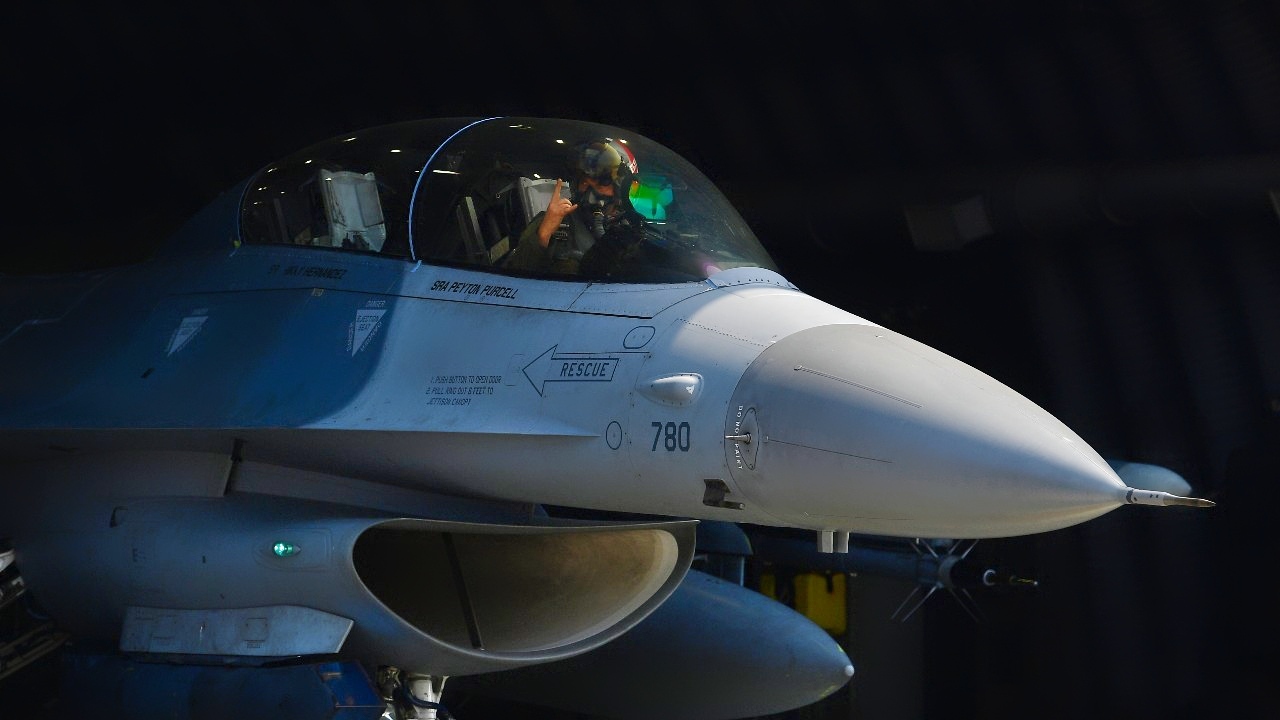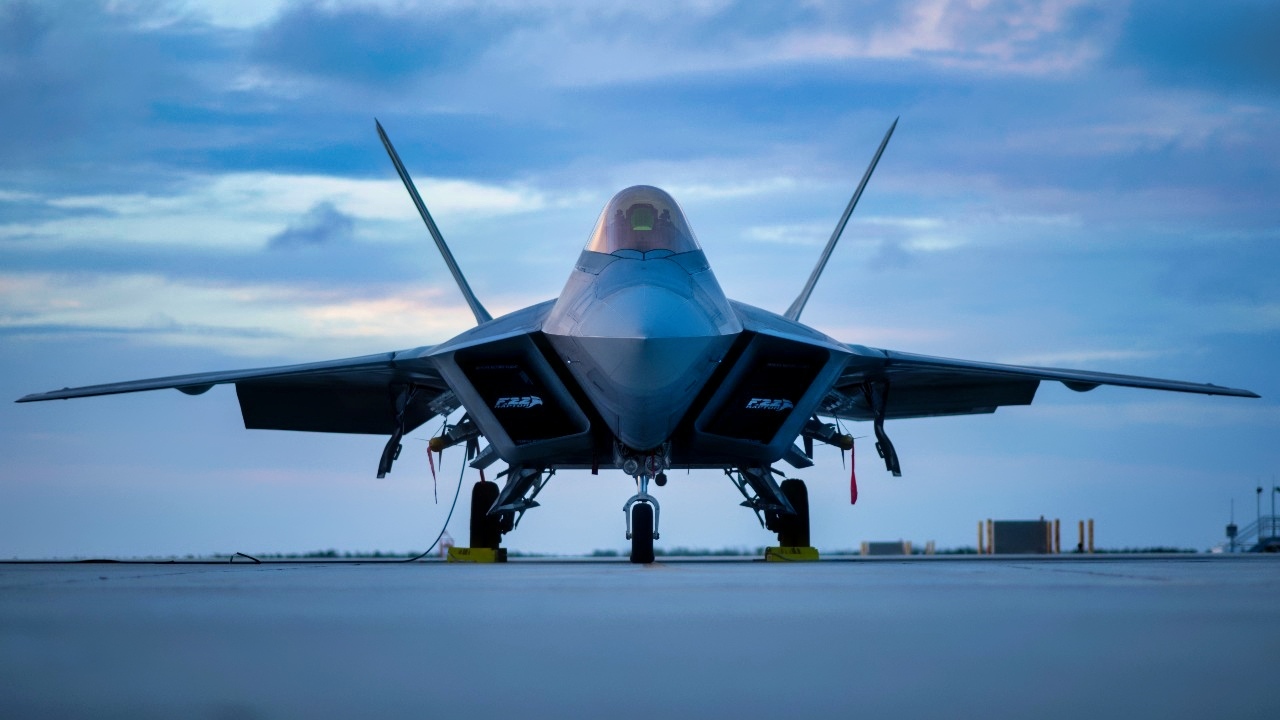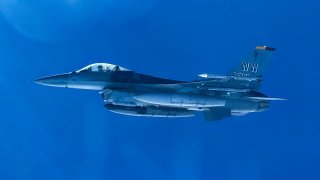China Will Freak: The Air Force Is Stacking F-22 Raptors and F-16 Fighters Close By
Kadena Air Base in Japan has received new rotations of U.S. Air Force aircraft, including F-22 Raptor fighters from Alaska and F-16 Fighting Falcons from South Carolina. This deployment supports the ongoing modernization efforts as the base phases out its aging fleet of F-15C/D Eagles, a process announced two years ago.
What You Need to Know: Kadena Air Base in Japan has received new rotations of U.S. Air Force aircraft, including F-22 Raptor fighters from Alaska and F-16 Fighting Falcons from South Carolina. This deployment supports the ongoing modernization efforts as the base phases out its aging fleet of F-15C/D Eagles, a process announced two years ago.

-While Kadena awaits the arrival of new F-15EX Eagle II aircraft in the coming years, the U.S. Air Force is maintaining a strong regional presence by rotating frontline combat aircraft such as the F-22 and F-16.
-These moves aim to enhance the U.S. posture in the Indo-Pacific amid regional security challenges.
New F-22 and F-16 Fighters Rotate into Kadena Air Base Amid F-15 Retirement
The " Keystone of Pacific" has welcomed a new rotation of aircraft and personnel this week, while it continues to prepare for the retirement of its legacy aircraft. Kadena Air Base, Japan, announced on Thursday that "new rotational forces from Joint Base Elmendorf-Richardson, Alaska, and Shaw Air Force Base, South Carolina" recently arrived. That has included fifth-generation F-22 Raptor air superiority fighters, which made the flight from the base in Alaska, while multirole F-16 Fighting Falcons flew in from Shaw.
"Together they represent the U.S. Air Force's continued commitment to enhancing posture and building on the strong foundation in the Indo-Pacific," Kadena stated.
Eagles Leaving the Nest
The arrival of Fighting Falcons and Raptors comes just days after the base confirmed that the personnel from the 199th and 19th Fighter Squadrons, and the 27th Expeditionary Fighter Generation Squadron will soon leave the nest in Japan, following a six-month deployment that supported the facility's modernization efforts.
The newly arrived F-22 will likely replace the Raptors of the 27th EFS. The U.S. has increasingly deployed the stealth fighters to the region as part of a show of force and to deter Chinese and North Korean aggression.
The deployments have been ramped up as Kadena has begun to retire its fleet of F-15C/D Eagle fighters. The air service first announced two years ago that the aging F-15s would be retired, but the process has been undertaken slowly – and it is unclear how many F-15Cs are still based at Kadena. The U.S. Air Force has continued to rotate different squadrons to the base to ensure a continued presence of frontline combat aircraft.
Kadena is on track to receive as many as thirty-six F-15EX Eagle IIs over the coming years, but in the meantime will likely continue to be supported by F-22 Raptors and other fighters sent from air bases in the U.S. Navy.
"There will be some learning as it comes to putting a new platform into these environments and we’ll probably learn a few lessons about the capabilities of the F-15EX," Pacific Air Forces commander Gen. Kevin B. Schnider told Air & Space Forces Magazine in September. "I don't think it’s going to be a significant transition at all to bring a new platform into Kadena just because the people that are operating that platform already know the business."

The Keystone of the Pacific
Kadena Air Base is located on the Japanese island of Okinawa, which is also home to an extensive network of air bases and naval facilities that all play a pivotal role in maintaining regional stability and safeguarding vital maritime and aerial routes.
The island is roughly 900 miles from Tokyo, Manila, Seoul, and Hong Kong. It sits 1,200 miles west of Guam, the American territory that serves as a critical hub for U.S. military operations in the region.
In April of this year, the U.S. Air Force carried out a massive "elephant walk" with F-15C, F-16C, F-22A, F-35A, and other aircraft. The display was meant to showcase the readiness and power, particularly as new rotational units, F-16Cs and F-22As, had recently arrived.
The exercise also strengthened the readiness and teamwork essential for air combat missions. A similar show of force was on display in late November 2022, when six different types of aircraft were lined up at Kadena, while another elephant walk was conducted at the base last November.
That means we should see another elephant walk any time now!
Author Experience and Expertise: Peter Suciu
Peter Suciu is a Michigan-based writer. He has contributed to more than four dozen magazines, newspapers, and websites with over 3,200 published pieces over a twenty-year career in journalism. He regularly writes about military hardware, firearms history, cybersecurity, politics, and international affairs. Peter is also a Contributing Writer for Forbes and Clearance Jobs. You can follow him on Twitter: @PeterSuciu. You can email the author: [email protected].
Image Credit: Creative Commons and/or Shutterstock.


